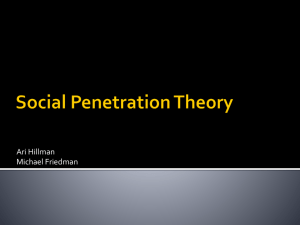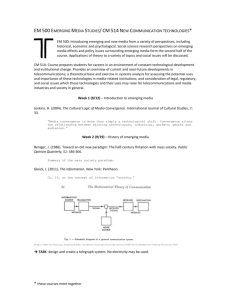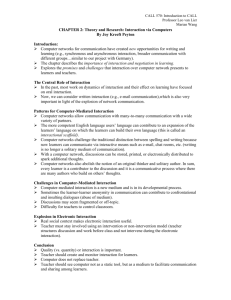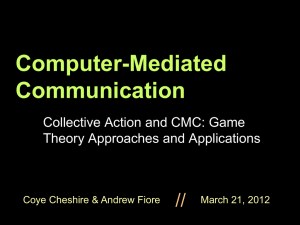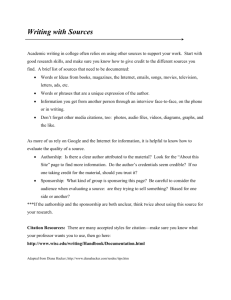Virtual Property and Copyright: Taking the First Sale Doctrine into
advertisement
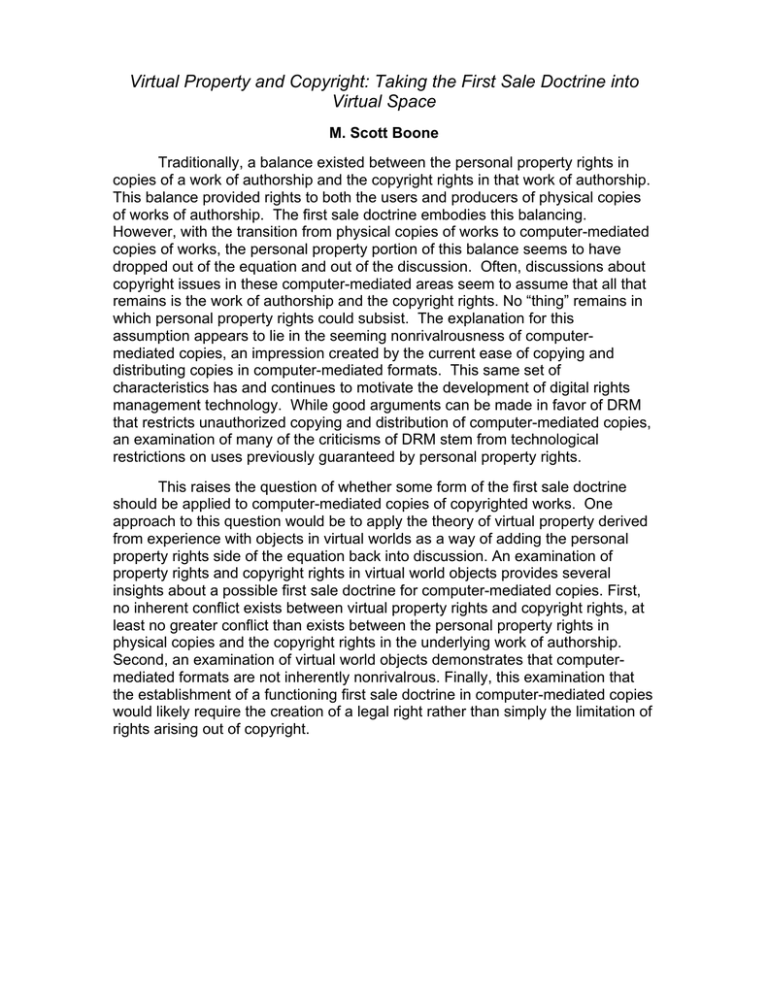
Virtual Property and Copyright: Taking the First Sale Doctrine into Virtual Space M. Scott Boone Traditionally, a balance existed between the personal property rights in copies of a work of authorship and the copyright rights in that work of authorship. This balance provided rights to both the users and producers of physical copies of works of authorship. The first sale doctrine embodies this balancing. However, with the transition from physical copies of works to computer-mediated copies of works, the personal property portion of this balance seems to have dropped out of the equation and out of the discussion. Often, discussions about copyright issues in these computer-mediated areas seem to assume that all that remains is the work of authorship and the copyright rights. No “thing” remains in which personal property rights could subsist. The explanation for this assumption appears to lie in the seeming nonrivalrousness of computermediated copies, an impression created by the current ease of copying and distributing copies in computer-mediated formats. This same set of characteristics has and continues to motivate the development of digital rights management technology. While good arguments can be made in favor of DRM that restricts unauthorized copying and distribution of computer-mediated copies, an examination of many of the criticisms of DRM stem from technological restrictions on uses previously guaranteed by personal property rights. This raises the question of whether some form of the first sale doctrine should be applied to computer-mediated copies of copyrighted works. One approach to this question would be to apply the theory of virtual property derived from experience with objects in virtual worlds as a way of adding the personal property rights side of the equation back into discussion. An examination of property rights and copyright rights in virtual world objects provides several insights about a possible first sale doctrine for computer-mediated copies. First, no inherent conflict exists between virtual property rights and copyright rights, at least no greater conflict than exists between the personal property rights in physical copies and the copyright rights in the underlying work of authorship. Second, an examination of virtual world objects demonstrates that computermediated formats are not inherently nonrivalrous. Finally, this examination that the establishment of a functioning first sale doctrine in computer-mediated copies would likely require the creation of a legal right rather than simply the limitation of rights arising out of copyright.
